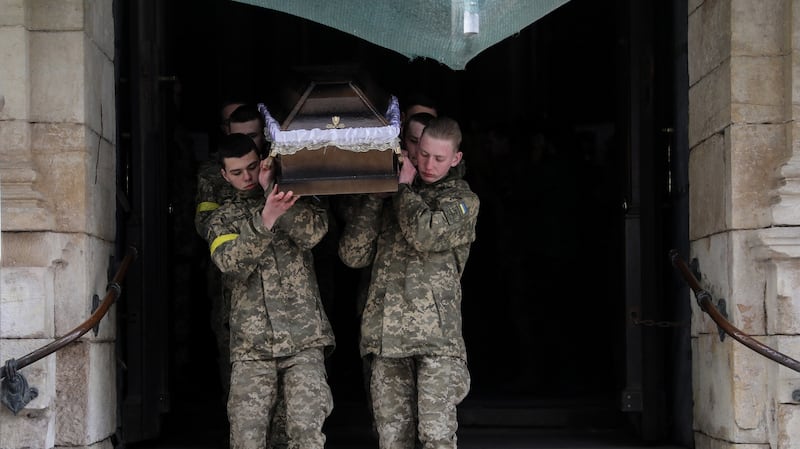Russia’s invasion of Ukraine has become a battle for the Donbas and a land bridge to Crimea. Russian forces, however, are struggling. Mariupol has proven to be an exceedingly tough city to capture, while Russian forces are also facing fierce resistance elsewhere in the south and east. The revised Russian military goal of “liberating” the Donbas is proving elusive. Despite what President Vladimir Putin says today to the Russian people at the Victory Day parade in Moscow, the empirical reality of Ukraine is once again failing to affirm what the Russian leader expected of it.
To understand why, and something of the horror of the Donbas today, we need to grasp the identity of Donbas in general and the three different versions of the Donbas in recent times: that prior to Russia’s first invasion, that between invasions, and today’s wartime reality.


The Donbas is an abbreviation of a geographic region, the Donets River Basin, and comprises in administrative terms two eastern regions of Ukraine: Luhansk and Donetsk. In area it is roughly two-thirds of the size of Ireland.
The region has a long history of struggle against state control. A Welsh businessman helped establish Donetsk as a coal mining and steel producing territory in the late 19th century. Thereafter the region became an industrial powerhouse, first for the Russian empire and later the Soviet Union.
It also acquired a reputation for toxic politics. Leon Trotsky once declared that “one can’t go to the Donbas without a [political] gas mask.” Strikes by the region’s miners in 1991 helped hasten the demise of the Soviet Union.
The Donbas that emerged from the Soviet Union suffered significant industrial neglect as its still considerable mining and industrial riches were cornered by businessmen practised in the region’s rough house traditions. They acquired a protective political roof from the area’s politicians, most prominently the once youthful street tough Viktor Yanukovych.
Bankrolled by the region’s oligarchs and the Russian state, Yanukovych became Ukraine’s prime minister in 2002. Defeated by the Orange Revolution in 2004, he recovered to capture the presidency of Ukraine in 2010, with help from a makeover by US political consultant Paul Manafort. Two years later Ukraine hosted Euro 2012, with a series of games played in the Donbas Arena, the home of Shakhkar Donetsk.
Corrupt
This is the first Donbas of recent times, a corrupt but functional region with a modernised façade. The ouster of Yanukovych from office in the wake of the violence on the Maidan square in Kyiv in late February 2014 triggered a cascade of events that would plunge this Donbas into chaos.
Irrespective of what people in the Donbas wanted, what they got was war
In annexing Crimea and fermenting secessionists in the Donbas, Putin removed parts of Ukraine historically sympathetic to Russia from its political system. His actions pushed many Ukrainians, including self-identifying Russians and Russian-speaking Ukrainians across southeast Ukraine, into direct opposition to Russia.
A large public opinion survey in April 2014, for example, found that half of respondents rejected the notion that Russia was justly protecting the interests of Russian-speakers in the southeast. Desire to follow Crimea and secede from Ukraine was minimal across the southeast though it attracted 30 per cent support in the Donbas. But even there only one in five respondents welcomed the prospect of Russian troops.
Irrespective of what people in the Donbas wanted, what they got was war. This produced a second Donbas, a land dramatically degraded and divided by warfare.
Donetsk and Luhansk were home to an estimated 6.5 million people before Russian proxy forces ignited a secessionist insurgency there in April 2014. In the subsequent conflagration, millions were forced to flee their homes and livelihoods. The grind and attrition of war devastated the region’s infrastructure and remade its demography. Approximately two-thirds of the Donbas remained in government hands while the remaining third was where Russia’s proxies established two Potemkin Peoples Republics. Estimates suggest about three million people left the Donbas entirely. Some moved within it from separatist-controlled territory to government cities like Mariupol.
This second Donbas had its complexities. My colleagues and I documented in public opinion research how majorities of people on both sides of the line of control prioritised having a decent salary and pension over which country they lived in.
Most remaining in separatist-controlled Donbas preferred to join Russia, or at least said so to pollsters calling from Russia. Pollsters calling from Kyiv tended to elicit greater support for Ukraine but also higher hesitancy. Toxic politics and propaganda filled the air.
More than half a million residents acquired Russian passports. Most living in government-controlled Donbas wanted to remain in Ukraine. At the same time, many there were critical of their local authorities and blamed Ukraine and Russia equally for the conflict. Few indicated a willingness to fight Russian soldiers should they come.
Invasion
And come they did. Putin’s recognition of the entities it created inside Ukraine as independent states prefigured a war to protect them from supposed “genocide”. Putin’s invasion produced a third Donbas. He imagined the region as a theatre for the performance of rescues and referendums, and perhaps the Donbas as primordial Russian land restored to the motherland. But this fantasy hit the material reality of stiff Ukrainian resistance.
Lenin statues have been remounted in certain places, the ruble introduced, and the internet rewired to censoring Russian providers
Mariupol became its hero city, its residential areas turned into gutted ruins, its factories into apocalyptic hellscapes. This third Donbas has seen a further million or more of its residents scattered afar. Swaths of the territory are now pure battlefields, with only the impoverished and immobile, the stranded and the stubborn remaining. Pity those having to negotiate daily life as opposing forces gird for battle in this hollow order of emptiness.
This third Donbas of displacement and terror, of course, extends beyond the region. Russian forces are striving to consolidate their occupation of southern Kherson, Mykolaiv and Zaporizhia, places being actively remade as a Russian strategic corridor and grain reserve.
A Kherson People’s Republic is reportedly in production as Russian forces seek to entrench their occupation of the city. Lenin statues have been remounted in certain places, the ruble introduced, and the internet rewired to censoring Russian providers.
Independent Ukraine is rolled back, Soviet nostalgia amplified, and land reimagined as Russian. Damn all that gets in the way. This is the messianic desire driving Putin’s war on Ukraine. But it is stalled. Victory Day is not coming soon if at all.













